![]()
![]()
![]()
Use LEFT and RIGHT arrow keys to navigate between flashcards;
Use UP and DOWN arrow keys to flip the card;
H to show hint;
A reads text to speech;
22 Cards in this Set
- Front
- Back
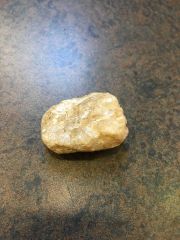
|
Talc: Greasy to dull luster hardness of 1 May or my not show cleavage color: white to light green used for baby powder |
|
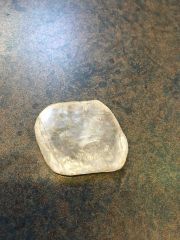
|
gypsum: dull -vitreous -silky- pearly luster colorless-white hardness 2 cleavage 3 not = 90 used for sheetrock, fertilizer and plaster |
|
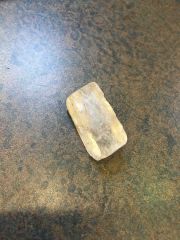
|
calcite: vitreous luster color variable hardness 3 cleavage 3 not = 90 (rhombohedral) reacts with hydrochloric acid used for cement, antacids, soil amendment |
|
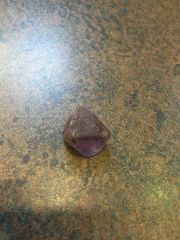
|
fluorite: color variable vitreous luster hardness 4 4 directions of cleavage (octahedral) used in toothpaste
|
|

|
orthoclase: dull- vitreous luster hardness 6 cleavage: two planes nearly at 90 color varies from white or cream to pink |
|
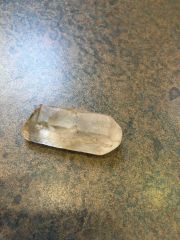
|
quartz: color variable vitreous luster hardness 7 hexagonal crystals conchoidal fracture S.G. 2.7 used for making glass, clocks, silicon metal for computers |
|
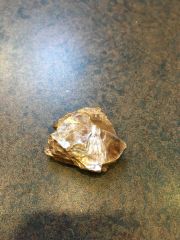
|
muscovite mica: colorless to grey vitreous luster H 2-2.5 1 direction of cleavage used in toothpaste, cosmetics, lamp shades. |
|
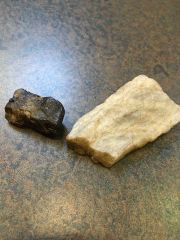
|
plagioclase feldspar: white to dark gray sometimes blue gray vitreous luster H-6 2 direction of cleavage at 90 striations used for making porcelain, ceramics |
|

|
biotite mica: dark green to black vitreous luster H- 2-2.5 1 direction of cleavage |
|

|
augite: color- dark green vitreous luster hardness = 6 2 direction of cleavage at about 90 |
|
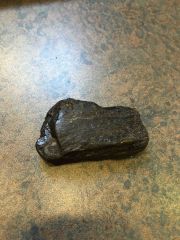
|
hornblend: black to dark green vitreous luster hardness = 6 2 direcitons of cleavage not at 90 SG 3.4 |
|

|
olivine: olive green vitreous luster hardness - 6.5 conchoidal fracture SG- 3.4 used as gemstone |
|
|
copper |
copper: metallic luster hardness 3.5 color- copper red streak- copper red used for wire, pennies |
|
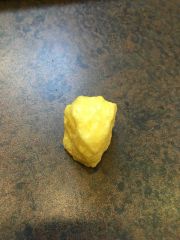
|
sulfer: yellow color vitreous- resinous luster distinctive odor used for matches, fertilizers, drugs |
|
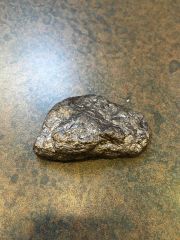
|
graphite: dark gray to black dull to metallic hardness 1-2 low specific gravity used for pencil lead, dry lubricants, electrodes, fishing poles, tennis rackets. |
|
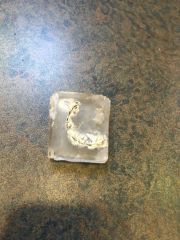
|
halite: colorless to white dull to vitreous luster hardness about 2 cleavage 3 = 90 (cubic) used for food flavoring and preservation, salting roads |
|
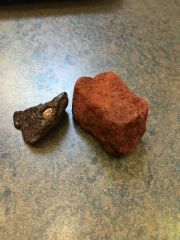
|
hematite: dull to metallic luster color gray to red brown hardness 1-6 streak red brown used for making steel and as a pigment |
|
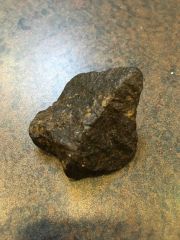
|
magnetite: dill to submetallic luster color- gray to black moderate specific gravity magnetic used for making steel |
|
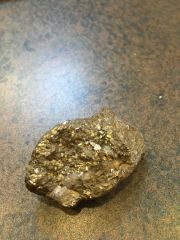
|
pyrite: metallic luster brassy yellow color streak black H- 6-61/2 specific gravity is moderate used for making sulfuric acid |
|
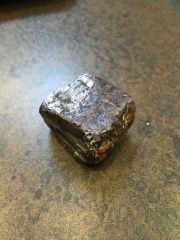
|
pyrite: metallic luster brassy yellow color streak black H- 6-61/2 specific gravity is moderate used for making sulfuric acid |
|

|
chalcopyrite: sub-metallic luster brassy yellow color hardness 4 moderate specific gravity streak greenish black major ore of copper |
|
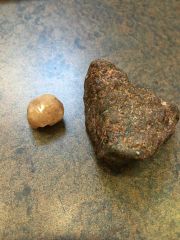
|
garnet: vitreous luster color variable hardness 7.5 dodecahedral crystals conchoidal fracture used for gemstone and abrasive |

